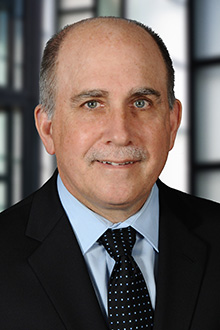Kaiser Cement And Gypsum Corp. v. Insurance Company Of The State Of Pennsylvania
(Coverage is Not Triggered Under Excess Insurance Policy Absent Exhaustion of Scheduled Underlying Insurance and Any Other Underlying Insurance Collectible By The Insured. However, Underlying Primary Insurance Issued By Truck Insurance Exchange Could Not Be Stacked to Trigger Multiple Policies for Individual Asbestos Claims.)
In Kaiser Cement and Gypsum Corp. v. Ins. Co. of the State of Pa., 215 Cal.App.4th 210 (April 8, 2013), the California Second District Court of Appeal reversed the trial court’s entry of summary adjudication of issues in favor of Kaiser Cement and Gypsum Corporation (“Kaiser”) and its primary insurer, Truck Insurance Exchange (“Truck”) relative to their claims against first level excess insurer, the Insurance Company of the State of Pennsylvania (“ICSOP”) contending that ICSOP was required to drop down and afford coverage for individual personal injury asbestos claims once Truck had paid out a single $500,000 per occurrence limit under a single policy.
In reversing the trial court’s order, the Court of Appeal interpreted language in the ICSOP excess policy which required the exhaustion of scheduled underlying insurance, plus the applicable limits of any other underlying insurance collectible by the insured. The Court of Appeal stated as follows:
Kaiser’s argument proves too much. As used in these two provisions, “underlying insurances” appears to refer to only for primary insurance listed in the attached “Schedule of Underlying Insurances.” But “underlying insurances” cannot mean only scheduled insurance, because the attached policy defines “Retained Limit” as an amount equal to the limits of liability indicated in the attached schedule, “plus the applicable limit(s) of any otherunderlying insurance collectible by the Insured.” (Italics added.) Thus, the “retained limit” definition, considered with the other two provisions highlighted by Kaiser, makes clear that “underlying insurance” is not only scheduled insurance, but any other collectible primary insurance as well.
Notwithstanding the Court of Appeal’s interpretation of ICSOP’s excess policy language, the Court of Appeal also held that the underlying Truck primary policies could not be stacked over multiple years. Rather, only the policy selected by Kaiser to respond to individual asbestos claims triggering coverage during the Truck policy period of January 1, 1974 to January 1, 1975 applied, such that the policy afforded per occurrence limits of $500,000 for each individual claim triggering coverage under the policy. Again, the Court of Appeal focused on the language in the Truck policy which limited coverage for the personal injury claims to $500,000 per occurrence, rather than $500,000 per occurrence with an annual limit of liability. The Court of Appeal stated as follows:
Although Continental adopted an “all-sums-with-stacking rule in the absence of contrary policy language, it made clear that any “stacking” analysis must begin with the relevant policy language. Here, pursuant to the “Insuring Agreements” of the 1974 primary policy, Truck agreed “contract as defined, or by reason of any other legal liability of the insured however arising or created or alleged to have risen or to have been created because of:
“1. Personal injury, sickness, disease, including death:
2. Injury to or destruction of property “including all loss resulting therefrom”
The “limit of liability” portion of the policy limits Truck's liability for personal injury or property damage to $500,000 “Per Occurrence.” (Italics added.) It further provides (part IV, “Policy Period, Territory, Limits”):
“The limit of liability stated in this policy as applicable ‘per occurrence' is the limit of the company's liability for each occurrence.
“There is no limit to the number of occurrences for which claims may be made hereunder, however, the limit of the Company's liability as respects any occurrence involving one or any combination of the hazards or perils insured against shall not exceed the per occurrence limit designated in the Declarations.” (Italics added.)
Truck and Kaiser contend that the 1974 primary policy does not permit “stacking' of Truck's annual per occurrence limits, and we agree. As the italicized language indicates, the policy contains a “per occurrence” limit—not, as Truck notes a “per occurrence per policy” or “per occurrence per year” limit.” This language is facially inconsistent with permitting Kaiser to recover from Truck more than the occurrence limit for a single occurrence.
Further, the policy specifically provides that, “limit of liability stated in this policy as applicable 'per occurrence' is the limit of the company's liability for each occurrence” and “the limit of the Company's liability as respects any occurrence, shall not exceed the per occurrence limit designated in the Declarations.” Notably, the policy does not say that the per occurrence limit is the limit of the company's annual liability for any occurrence, or that the per occurrence limit is the limit of the company's liability under the policy. Rather, it, says that the per occurrence limit is the limit of the company's liability. We presume, as we must, that the parties intended this language to mean what it plainly says—that for any- single occurrence, Truck is liable up to the per occurrence limit, and no more. We thus conclude that the trial court correctly determined that Kaiser may not 'stack' the liability limits of Truck's primary policies, but rather may recover only up to the “per occurrence” limit of one policy.
Notwithstanding the Court’s holding that ICSOP could not stack underlying Truck policies in order to avoid coverage for individual asbestos claims, the Court of Appeal remanded the case to the trial court to determine whether any other underlying insurance (i.e., other than any of the Truck policies), remains available to respond to such claims. If so, pursuant to the plain language of the ICSOP excess policy, potential coverage is not triggered until all underlying collectible insurance has been exhausted.
